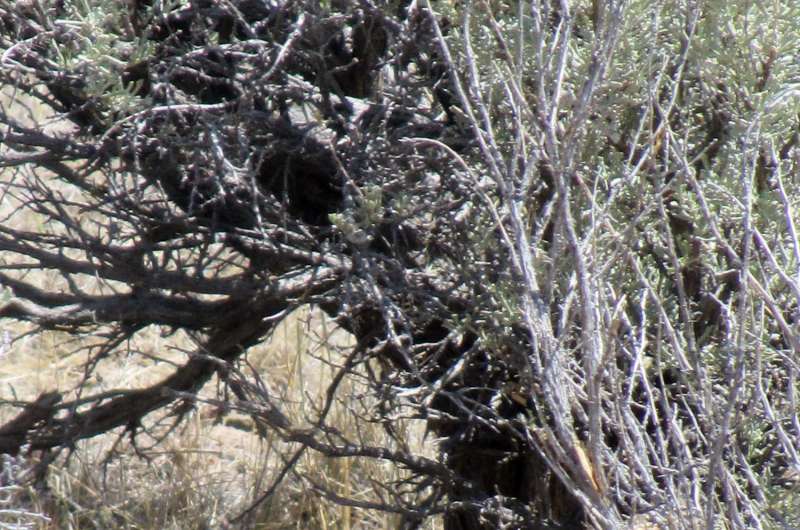Choosy sage-grouse select nest sites to maximize their success

Do sage-grouse know what's good for them when choosing where to nest? That's the question at the heart of a new study in The Condor: Ornithological Applications, in which researchers examined the habitat preferences of these vulnerable grassland birds. They found that females look for vegetation characteristics that will boost their reproductive success when selecting nest sites, giving land managers new hints about what types of habitat are most in need of protection.
Theory says that animals should select habitat that maximizes their fitness, but reality doesn't always live up to this—climate variability, habitat degradation, and predator-prey interactions can all push individuals into using "maladaptive" habitat that hurts their chances to survive and reproduce. Dan Gibson of the University of Nevada Reno and his colleagues examined how Greater Sage-Grouse in Nevada selected their nest sites and found that despite population declines, females were choosing spots with characteristics associated with reproductive success, such as greater shrub cover and forb diversity. The greatest effect was on the survival of chicks after they fledged, suggesting females were selecting nesting habitat based on its promise for getting their chicks through that particular life stage.
Gibson and his colleagues monitored more than 300 female sage-grouse between 2004 and 2012 in Eureka County, Nevada. Capturing them and equipping them with radio transmitters, they tracked the birds to their nests and monitored them weekly to follow their progress through the breeding season. By collecting data on the vegetation surrounding each nest site, they were able to determine what types of habitat were most associated with positive outcomes.
The authors of this study propose that areas with active sage-grouse breeding grounds, or "leks," that are located in habitat correlated with high reproductive success should be the highest conservation priority. "In a conservation context, our approach linking habitat selection with demographic success allows managers to move beyond designating areas as habitat based solely on observations of individuals," says Gibson. "This should provide increased resolution for ranking habitat in terms of both its importance to an individual species and its management priority."
"Gibson et al. confirm the importance of fine-scale habitat characteristics for sage-grouse nest and chick survival," according to Dave Dahlgren, a sage-grouse expert from Utah State University who was not involved with the study. "This paper contributes to sage-grouse conservation efforts by demonstrating the scale and habitat diversity (e.g., shrub species diversity) selected for and which factors ultimately contributed to fitness within the population."
More information: "Nesting habitat selection influences nest and early offspring survival in Greater Sage-Grouse" Sept. 14, 2016, www.americanornithologypubs.or … .1650/CONDOR-16-62.1
Provided by The Condor
















